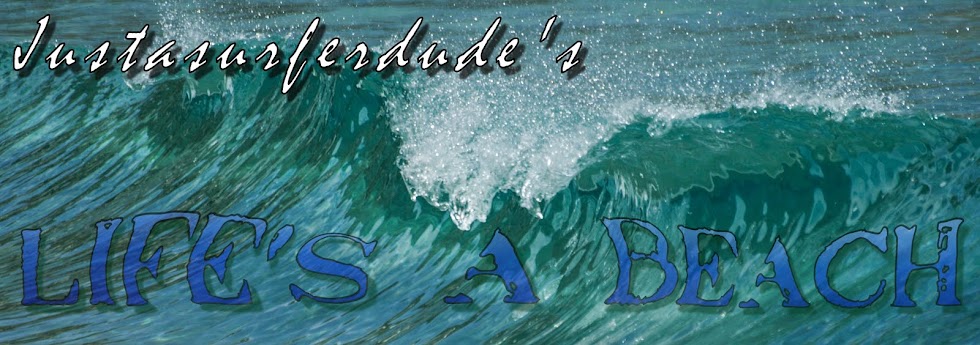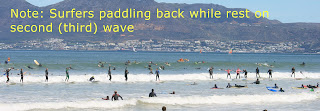I have been thinking about the surfing event to break the record for the most surfers standing on one wave and how it could be improved to maybe get more surfers on a single wave. Having been in the water myself I realized a few obstacles that prevented us from getting that record:
Waves - The waves were perfect. Medium sized swells building up over a large distance allowing many surfers on one wave.There were two issues with the waves though:
1) the sets were quite long apart after each other, so we wasted most of the time waiting for the right sets,
2) we were told to wait for the third wave which on the day turned out to be smaller than the first two waves of the set. Some guys took the first wave which was not going to help the rest who were waiting for the wave they were told to take,
3) the shape of the waves favoured the longboards and not the shortboards.
Although we couldn't really complain about what Nature gave us on the day, we might have to look at the following solutions to make the waves we are giving more successful to ride:
1) Separate the surfers into 4 groups based on what they are riding. Longboards, minimals, shortboards and SUPs. Because the waves have a point where they pick up steeper before it breaks, that area should be given to the shortboards. As the wave weakens out further away from that point, the rest of the waves should be allocated to the minimals, the longsboards and finally the SUPs. Longs boards and SUP can go on much slower and weaker waves than shortboards. If we want each type of surfer to stay on a weak wave for at least 5 seconds, then this might assist in achieving that target.
2) There were too many surfers taking waves when they thought it was the best wave to take. Granted, the waves they took were probably better than the ones we were told to take, but with half of the participants taking waves at their own decision it left not enough surfers behind to make up the numbers for the second wave. Secondly they were now paddling back in the way of the second line of surfers catching their waves. The organizers should have a jet ski in the water and decide from there is the wave is good to ride, not from the beach. Once the jetski indicates to catch the wave, then all should start paddling.
3) Keep the line straight for easier take-off. The problems with different boards mixed up meant that shortboards and longboard do not take the wave at the same spot and thus leaving shortboards lying in front of the longboards or vice versa. Catching a wave with someone floating in the water in front of you is not easy. Put two surfers on your side and the chances of everyone getting up becomes rather slim.





No comments:
Post a Comment